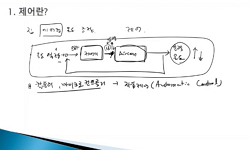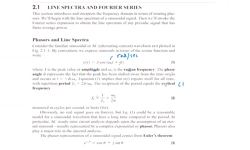Background: At present time, smartphones have become very popular and powerful devices, and smartphone applications with the good validity have been designed to assess human balance ability. Objects: The purpose of this study is to evaluate the feasi...
http://chineseinput.net/에서 pinyin(병음)방식으로 중국어를 변환할 수 있습니다.
변환된 중국어를 복사하여 사용하시면 됩니다.
- 中文 을 입력하시려면 zhongwen을 입력하시고 space를누르시면됩니다.
- 北京 을 입력하시려면 beijing을 입력하시고 space를 누르시면 됩니다.

가속도 주파수분석 방법을 이용한 스마트폰 기반 정적균형평가 = Smartphone Based Standing Balance Evaluation Using Frequency Domain Analysis of Acceleration
한글로보기https://www.riss.kr/link?id=A105575924
- 저자
- 발행기관
- 학술지명
- 권호사항
-
발행연도
2018
-
작성언어
-
- 주제어
-
KDC
512
-
등재정보
KCI등재
-
자료형태
학술저널
- 발행기관 URL
-
수록면
27-38(12쪽)
-
KCI 피인용횟수
0
- DOI식별코드
- 제공처
- 소장기관
-
0
상세조회 -
0
다운로드
부가정보
다국어 초록 (Multilingual Abstract)
Background: At present time, smartphones have become very popular and powerful devices, and smartphone applications with the good validity have been designed to assess human balance ability.
Objects: The purpose of this study is to evaluate the feasibility of smartphone acceleration in the assessment of postural control ability for six different conditions.
Methods: Twenty healthy college-aged individuals volunteered. Static balance ability was measured twice with one-day interval using smartphone application and 3D motion capture system under the six different conditions.
Results: Dominant frequencies for each test condition did not show significant differences except for two conditions. The intra-rater correlation coefficient between the first and second tests showed high correlations in six conditions(r>.70, p<.05). Smartphone acceleration and the acceleration calculated from the 3D marker position data showed high correlation coefficient(r>.80, p<.001).
Conclusion: Acceleration recorded from a smartphone could be useful assessment variables for balance test in the clinical field.
참고문헌 (Reference)
1 최현진, "트레드밀 운동학습 훈련이 경직성 뇌성마비 아동의 기능과 균형에 미치는 영향" 한국산학기술학회 14 (14): 804-810, 2013
2 한슬기, "스마트폰의 가속도 센서를 이용한 정적균형능력 측정의 신뢰도 연구" 한국산학기술학회 17 (17): 233-238, 2016
3 조혁신, "고유수용성신경근촉진법의 체간 패턴 운동을 병행한 경두개직류자극이 뇌졸중 환자의 하지 기능에 미치는 영향" 한국산학기술학회 15 (15): 6767-6773, 2014
4 지상구, "고유수용성 신경근 촉진법의 체간 패턴 훈련이 뇌졸중 환자의 하지 근 활성도와 정적 균형에 미치는 영향" 한국산학기술학회 14 (14): 5730-5736, 2013
5 Hubble RP, "Wearable sensor use for assessing standing balance and walking stability in people with Parkinson's disease: A systematic review" 10 (10): e0123705-, 2015
6 Golomer E, "Visual contribution to self-induced body sway frequencies and visual perception of male professional dancers"
7 Howcroft J, "Understanding dynamic stability from pelvis accelerometer data and the relationship to balance and mobility in transtibial amputees" 41 (41): 808-812, 2015
8 Moe-Nilssen R, "Trunk accelerometry as a measure of balance control during quiet standing" 16 (16): 60-68, 2002
9 Singh NB, "The spectral content of postural sway during quiet stance: Influences of age, vision and somatosensory inputs" 22 (22): 131-136, 2011
10 Lee CW, "The effects of hippotherapy and a horse riding simulator on the balance of children with cerebral palsy" 26 (26): 423-425, 2014
1 최현진, "트레드밀 운동학습 훈련이 경직성 뇌성마비 아동의 기능과 균형에 미치는 영향" 한국산학기술학회 14 (14): 804-810, 2013
2 한슬기, "스마트폰의 가속도 센서를 이용한 정적균형능력 측정의 신뢰도 연구" 한국산학기술학회 17 (17): 233-238, 2016
3 조혁신, "고유수용성신경근촉진법의 체간 패턴 운동을 병행한 경두개직류자극이 뇌졸중 환자의 하지 기능에 미치는 영향" 한국산학기술학회 15 (15): 6767-6773, 2014
4 지상구, "고유수용성 신경근 촉진법의 체간 패턴 훈련이 뇌졸중 환자의 하지 근 활성도와 정적 균형에 미치는 영향" 한국산학기술학회 14 (14): 5730-5736, 2013
5 Hubble RP, "Wearable sensor use for assessing standing balance and walking stability in people with Parkinson's disease: A systematic review" 10 (10): e0123705-, 2015
6 Golomer E, "Visual contribution to self-induced body sway frequencies and visual perception of male professional dancers"
7 Howcroft J, "Understanding dynamic stability from pelvis accelerometer data and the relationship to balance and mobility in transtibial amputees" 41 (41): 808-812, 2015
8 Moe-Nilssen R, "Trunk accelerometry as a measure of balance control during quiet standing" 16 (16): 60-68, 2002
9 Singh NB, "The spectral content of postural sway during quiet stance: Influences of age, vision and somatosensory inputs" 22 (22): 131-136, 2011
10 Lee CW, "The effects of hippotherapy and a horse riding simulator on the balance of children with cerebral palsy" 26 (26): 423-425, 2014
11 Visser JE, "The clinical utility of posturography" 119 (119): 2424-2436, 2008
12 Khattar VS, "The clinical test for the sensory interaction of balance" 4 (4): 41-45, 2012
13 Mayagoitia RE, "Standing balance evaluation using a triaxial accelerometer" 16 (16): 55-59, 2002
14 McClenaghan BA, "Spectral characteristics of aging postural control" 4 (4): 112-121, 1996
15 Golomer E, "Spectral analysis of adult dancers' sways: Sex and interaction vision-proprioception" 105 (105): 15-26, 2000
16 Golomer E, "Sex-linked differences in equilibrium reactions among adolescents performing complex sensorimotor tasks" 91 (91): 49-55, 1997
17 Cruz-Montecinos C, "Sensory strategies of postural sway during quiet stance in patients with haemophilic arthropathy" 23 (23): e419-e426, 2017
18 Nishiguchi S, "Self-assessment of rheumatoid arthritis disease activity using a smartphone application. Development and 3-month feasibility study" 55 (55): 65-69, 2016
19 Nishiguchi S, "Reliability and validity of gait analysis by android-based smartphone. Telemed" 18 (18): 292-296, 2012
20 Galan-Mercant A, "Reliability and criterion-related validity with a smartphone used in timed-up-and-go test" 13 : 156-, 2014
21 Chung CC, "Recurrence quantitative analysis of postural sway using force plate and smartphone" 58 (58): 1271-1275, 2014
22 Martinez-Mendez R, "Postural sway parameters using a triaxial accelerometer: Comparing elderly and young healthy adults" 15 (15): 899-910, 2012
23 Dichgans J, "Postural sway in normals and atactic patients: analysis of the stabilising and destabilizing effects of vision" 17 (17): 15-24, 1976
24 Nagy E, "Postural control in athletes participating in an ironman triathlon" 92 (92): 407-413, 2004
25 Richardson PK, "Performance of preschoolers on the pediatric clinical test of sensory Interaction for balance" 46 (46): 793-800, 1992
26 Shah N, "Novel use of a smartphone to measure standing balance" 3 (3): e4-, 2016
27 Yeh JR, "Nonlinear analysis of sensory organization test for subjects with unilateral vestibular dysfunction" 9 (9): e91230-, 2014
28 Chaudhry H, "Measurement of balance in computer posturography: Comparison of methods-A brief review" 15 (15): 82-91, 2011
29 Shiavi R, "Introduction to applied statistical signal analysis" Academic Press 1999
30 Karantonis DM, "Implementation of a real-time human movement classifier using a triaxial accelerometer for ambulatory monitoring" 10 (10): 156-167, 2006
31 Salzman, B, "Gait and balance disorders in older adults" 82 (82): 61-68, 2010
32 Jarnlo GB, "Functional balance tests related to falls among elderly people living in the community" 5 : 7-14, 2003
33 Kwon OY, "Evaluation of the balance ability for 20 to 29 years old on the unstable platform" 3 (3): 1-11, 1996
34 Capela NA, "Evaluation of a smartphone human activity recognition application with able-bodied and stroke participants" 13 : 5-, 2016
35 Bizid R, "Effects of fatigue induced by neuromuscular electrical stimulation on postural control" 12 (12): 60-66, 2009
36 Sasagawa S, "Effect of the hip motion on the body kinematics in the sagittal plane during human quiet standing" 450 (450): 27-31, 2009
37 Oba N, "Difference in postural control during quiet standing between young children and adults: Assessment with center of mass acceleration" 10 (10): e0140235-, 2015
38 Cheng YY, "Correlation of the composite equilibrium score of computerized dynamic posturography and clinical balance tests" 3 (3): 77-81, 2012
39 Hsu WL, "Control and estimation of posture during quiet stance depends on multijoint coordination" 97 (97): 3024-3035, 2007
40 Monsell EM, "Computerized dynamic platform posturography" 117 (117): 394-398, 1997
41 Chang WH, "Common Disorders Causing Balance Problems" 6 (6): 54-57, 2013
42 Lee BC, "Cell phone based balance trainer" 9 : 10-, 2012
43 Shumway-Cook A, "Assessing the influence of sensory interaction of balance. Suggestion from the field" 66 (66): 1548-1550, 1986
44 Hambly K, "Agreement between a novel smartphone application and a long arm goniometer for assessment of knee flexion" 2 : 1-14, 2012
45 Han S, "A study on the reliability of measuring dynamic balance ability using a smartphone" 28 (28): 2515-2518, 2016
46 Njiokiktjien C, "A possible contribution of stabilography to the differential diagnosis of cerebellar processes" 19 (19): 87-88, 1978
동일학술지(권/호) 다른 논문
-
어깨통증을 가진 전문 오케스트라 현악기 연주자에게 적용한 운동프로그램이 통증과 기능수준, 자세 특성에 미치는 효과: 사례군 연구
- 한국전문물리치료학회
- 신혜원(Hye-won Shin)
- 2018
- KCI등재
-
- 한국전문물리치료학회
- Sol-a Choi
- 2018
- KCI등재
-
- 한국전문물리치료학회
- Bit-na-rae Kim
- 2018
- KCI등재
-
푸쉬업플러스와 데드리프트 운동 시 골반압박이 견관절과 요골반부 주위근의 근활성도와 체간 신전근 근력에 미치는 영향
- 한국전문물리치료학회
- 황천종(Tian-zong Huang)
- 2018
- KCI등재
분석정보
인용정보 인용지수 설명보기
학술지 이력
| 연월일 | 이력구분 | 이력상세 | 등재구분 |
|---|---|---|---|
| 2027 | 평가예정 | 재인증평가 신청대상 (재인증) | |
| 2021-01-01 | 평가 | 등재학술지 유지 (재인증) |  |
| 2018-01-01 | 평가 | 등재학술지 유지 (등재유지) |  |
| 2015-01-01 | 평가 | 등재학술지 유지 (등재유지) |  |
| 2013-03-04 | 학회명변경 | 영문명 : Korean Academy Of University Trained Physical Therapy -> Korean Research Society of Physical Therapy |  |
| 2011-01-01 | 평가 | 등재학술지 유지 (등재유지) |  |
| 2009-01-01 | 평가 | 등재학술지 유지 (등재유지) |  |
| 2007-01-09 | 학회명변경 | 영문명 : Physical Therapy Korea -> Korean Academy Of University Trained Physical Therapy |  |
| 2006-01-01 | 평가 | 등재학술지 선정 (등재후보2차) |  |
| 2005-05-31 | 학술지명변경 | 한글명 : 한국전문물리치료학회 -> 한국전문물리치료학회지 |  |
| 2005-05-02 | 학회명변경 | 영문명 : Journal Of The Korean Academy Of University Trained Physical Therapy -> Physical Therapy Korea |  |
| 2005-02-19 | 학술지명변경 | 외국어명 : J Korean Acad University Trained Phys Th -> Physical Therapy Korea |  |
| 2005-01-01 | 평가 | 등재후보 1차 PASS (등재후보1차) |  |
| 2003-07-01 | 평가 | 등재후보학술지 선정 (신규평가) |  |
학술지 인용정보
| 기준연도 | WOS-KCI 통합IF(2년) | KCIF(2년) | KCIF(3년) |
|---|---|---|---|
| 2016 | 0.4 | 0.4 | 0.39 |
| KCIF(4년) | KCIF(5년) | 중심성지수(3년) | 즉시성지수 |
| 0.37 | 0.38 | 0.437 | 0.05 |





 ScienceON
ScienceON 스콜라
스콜라




